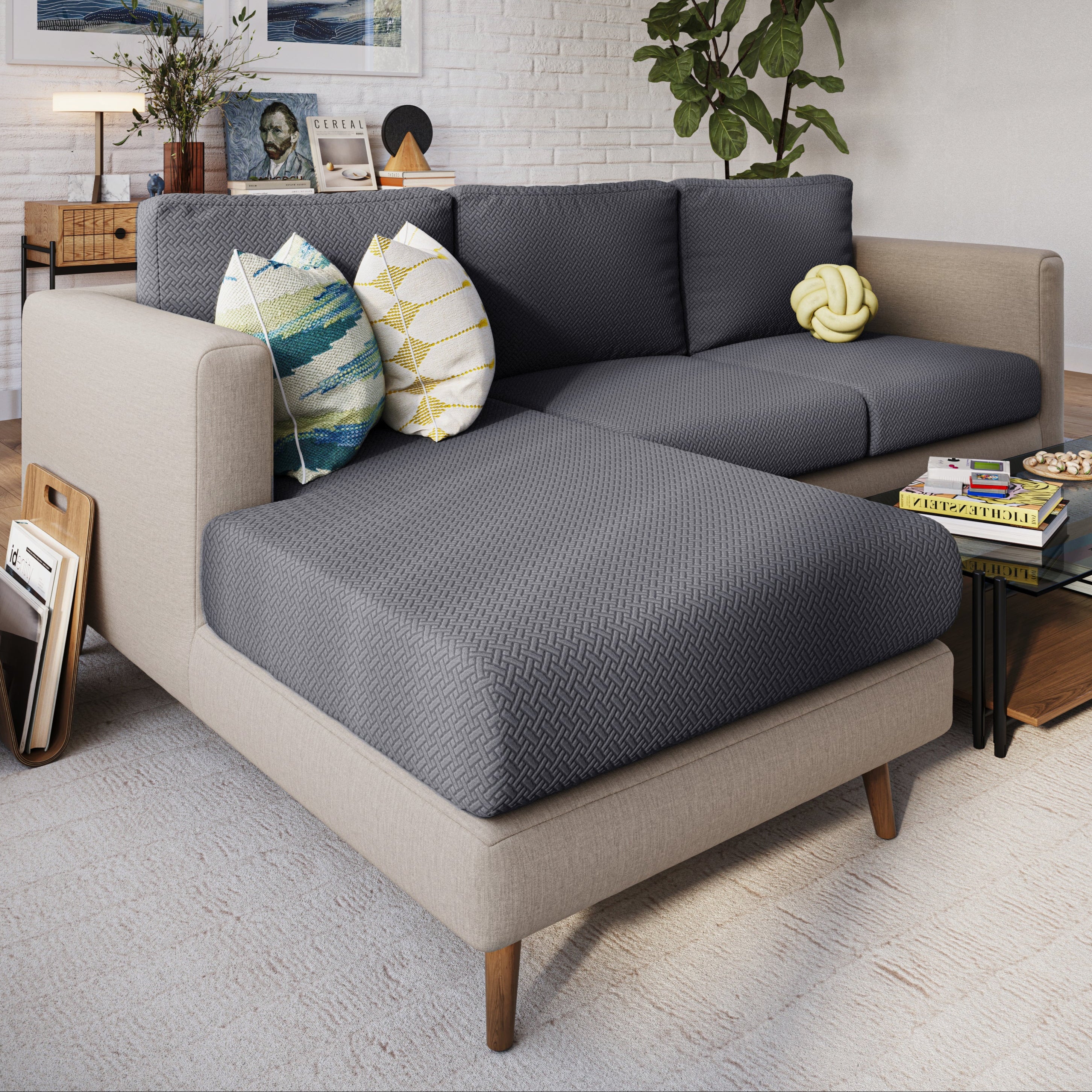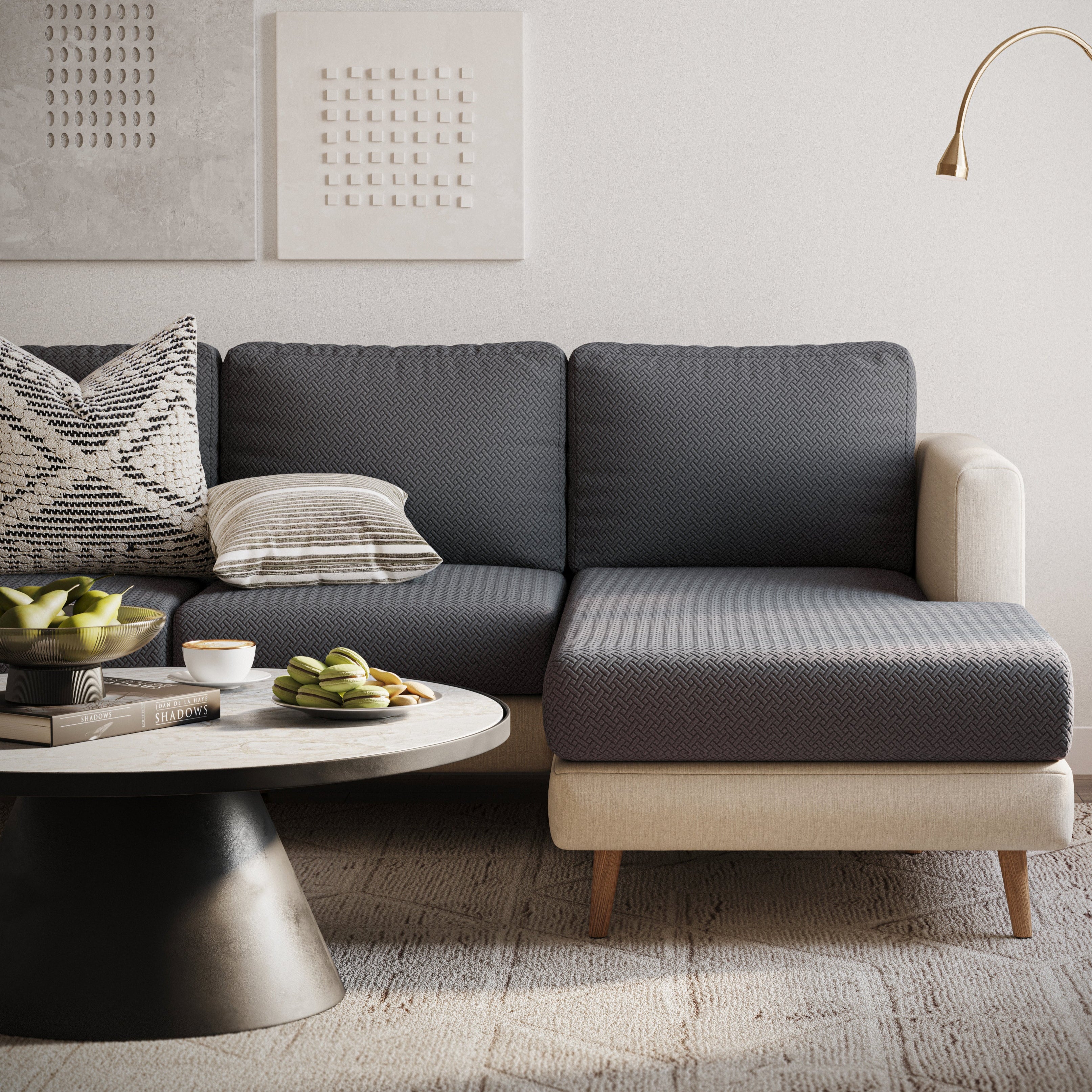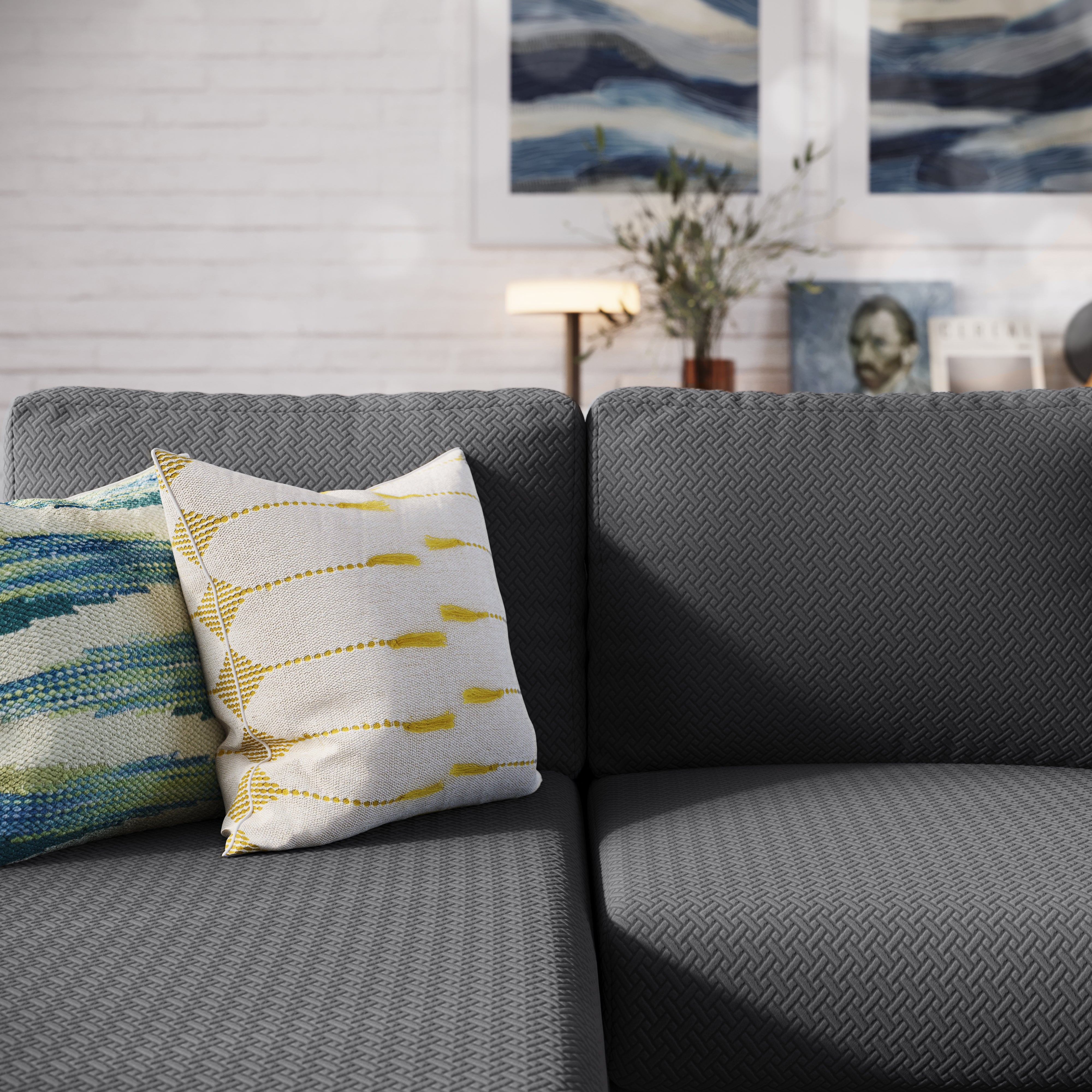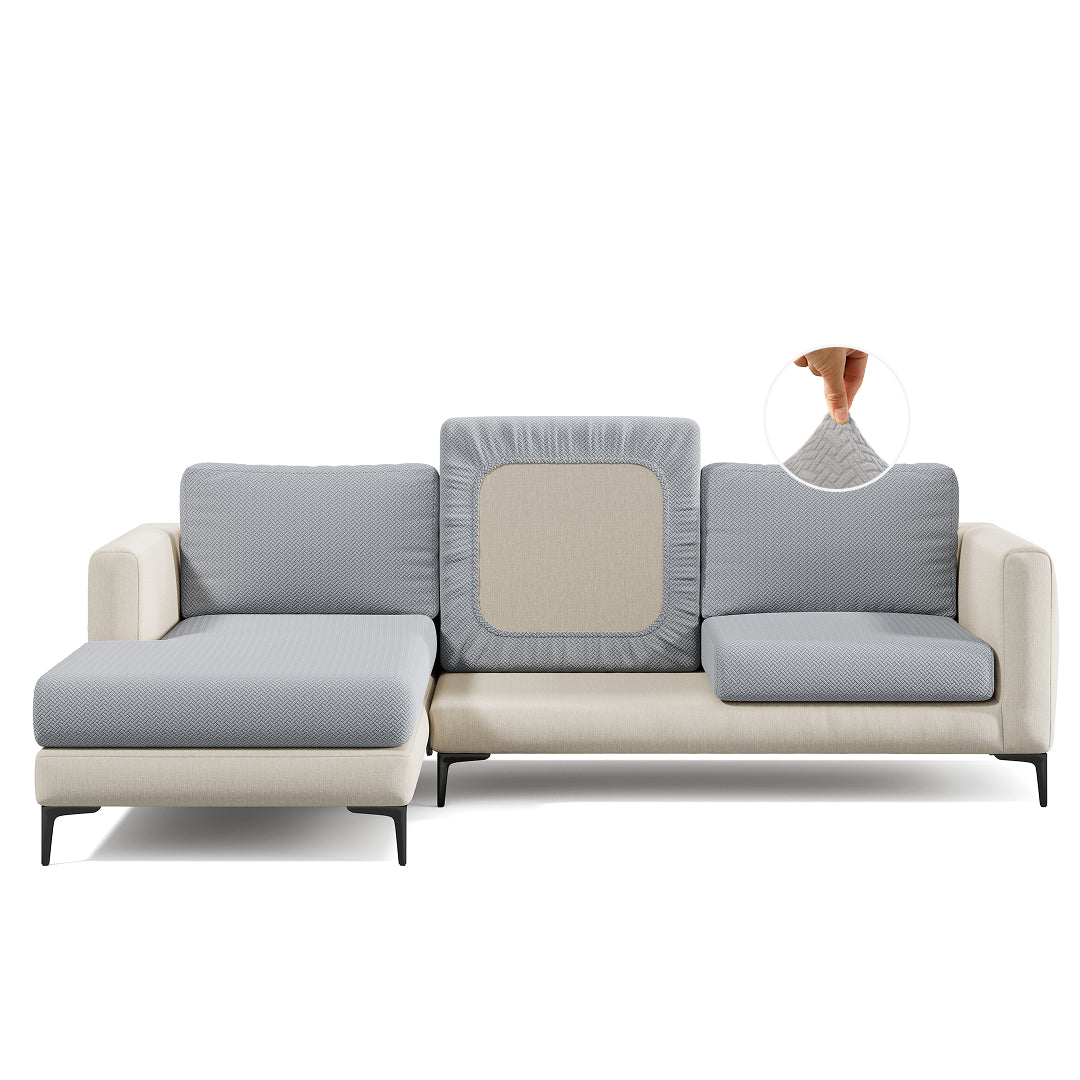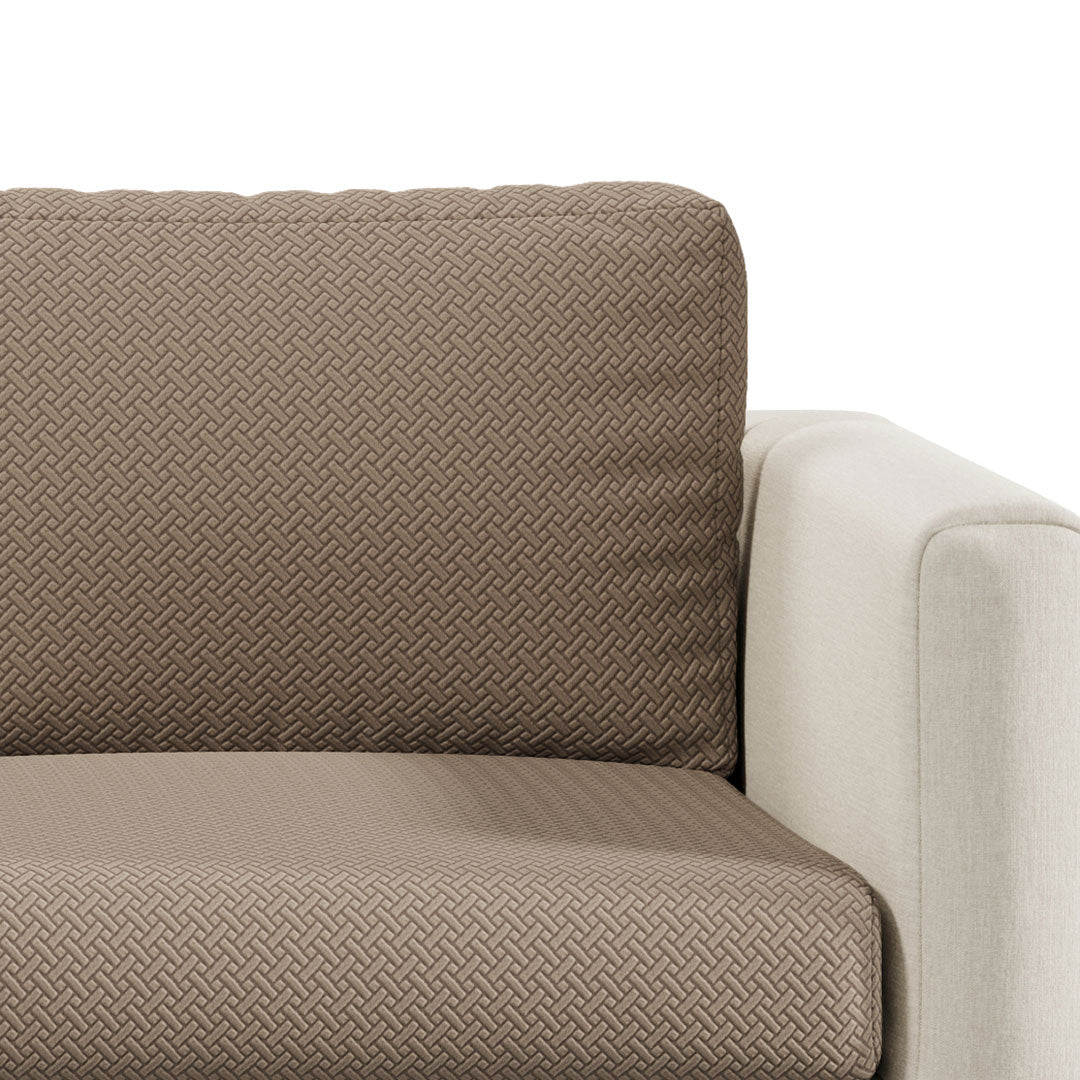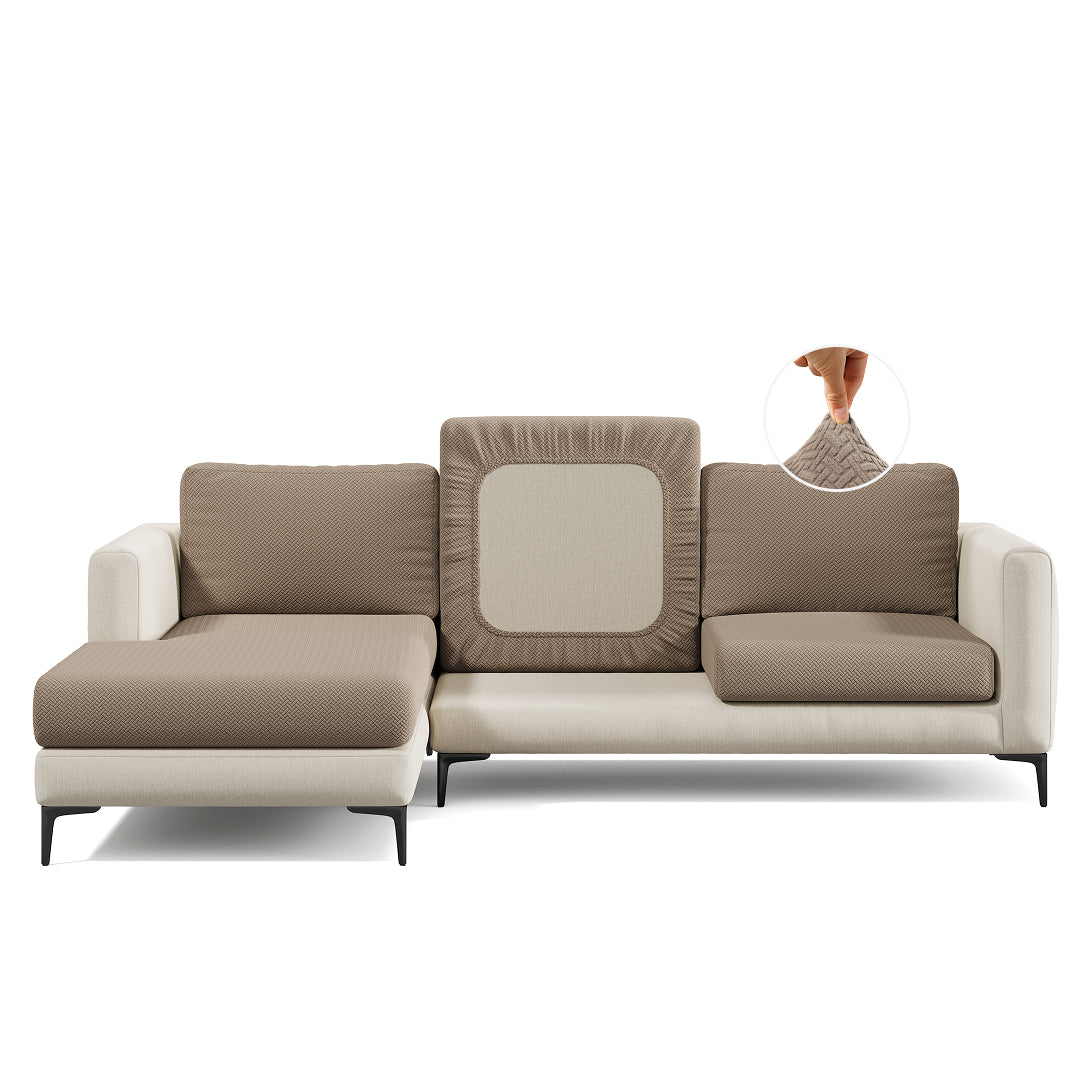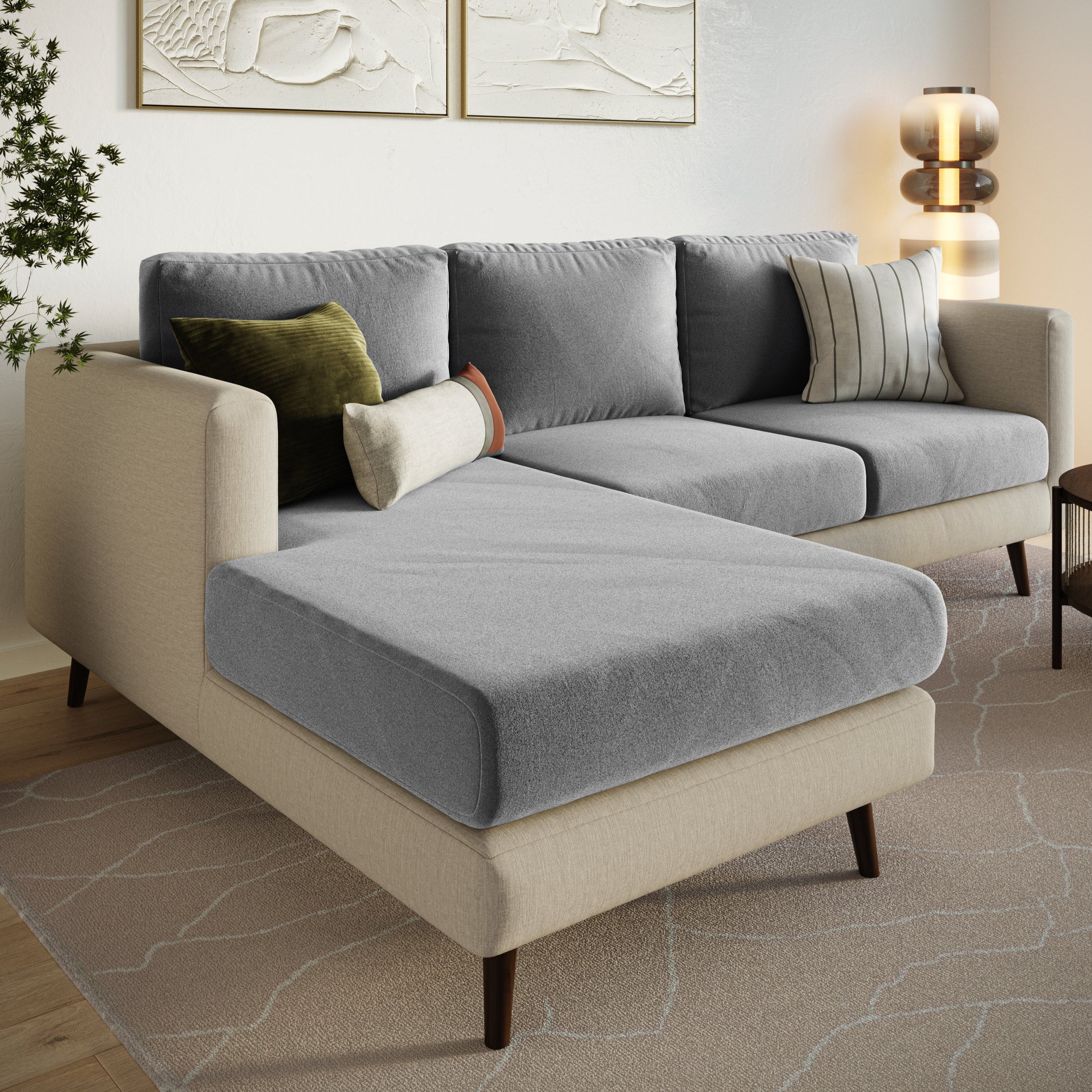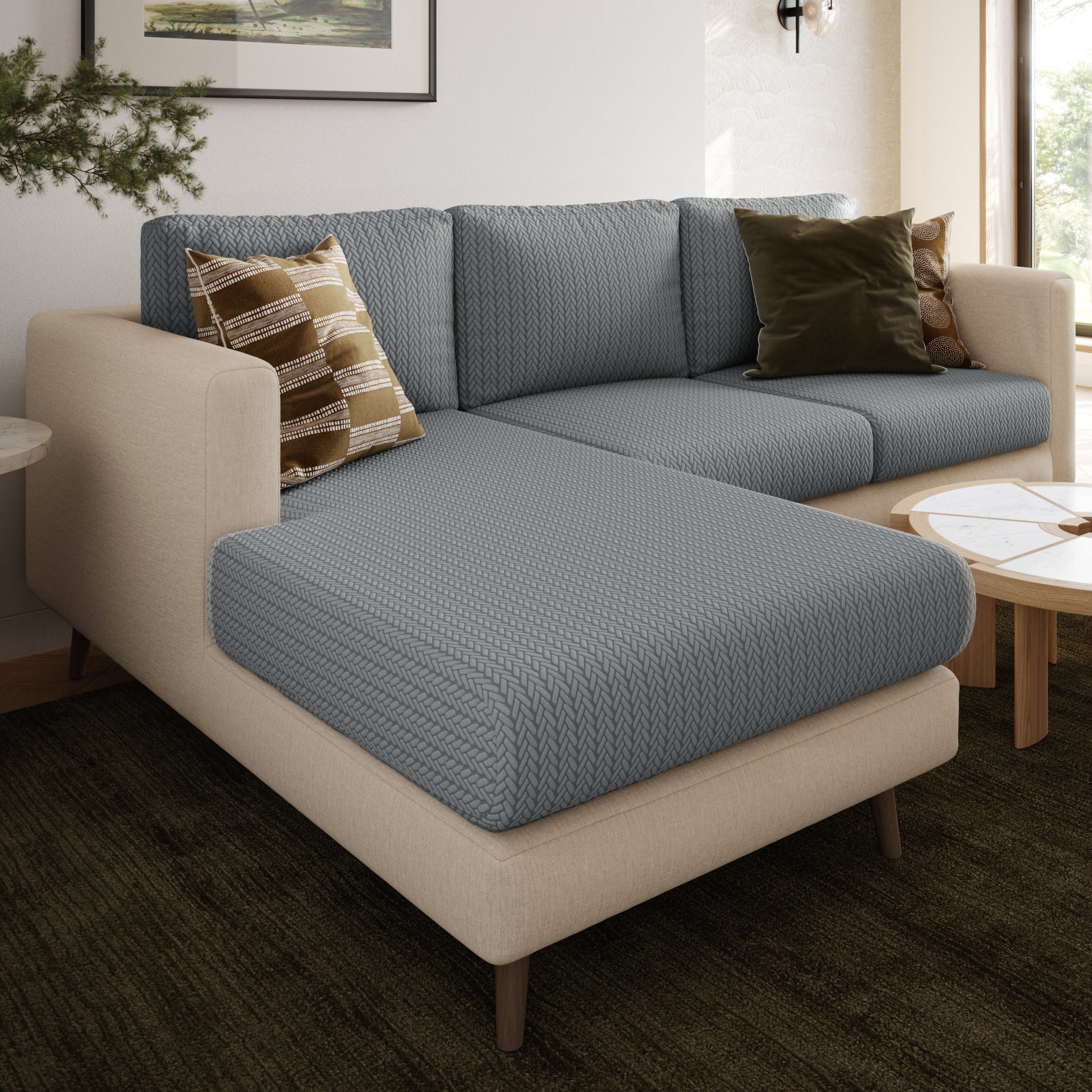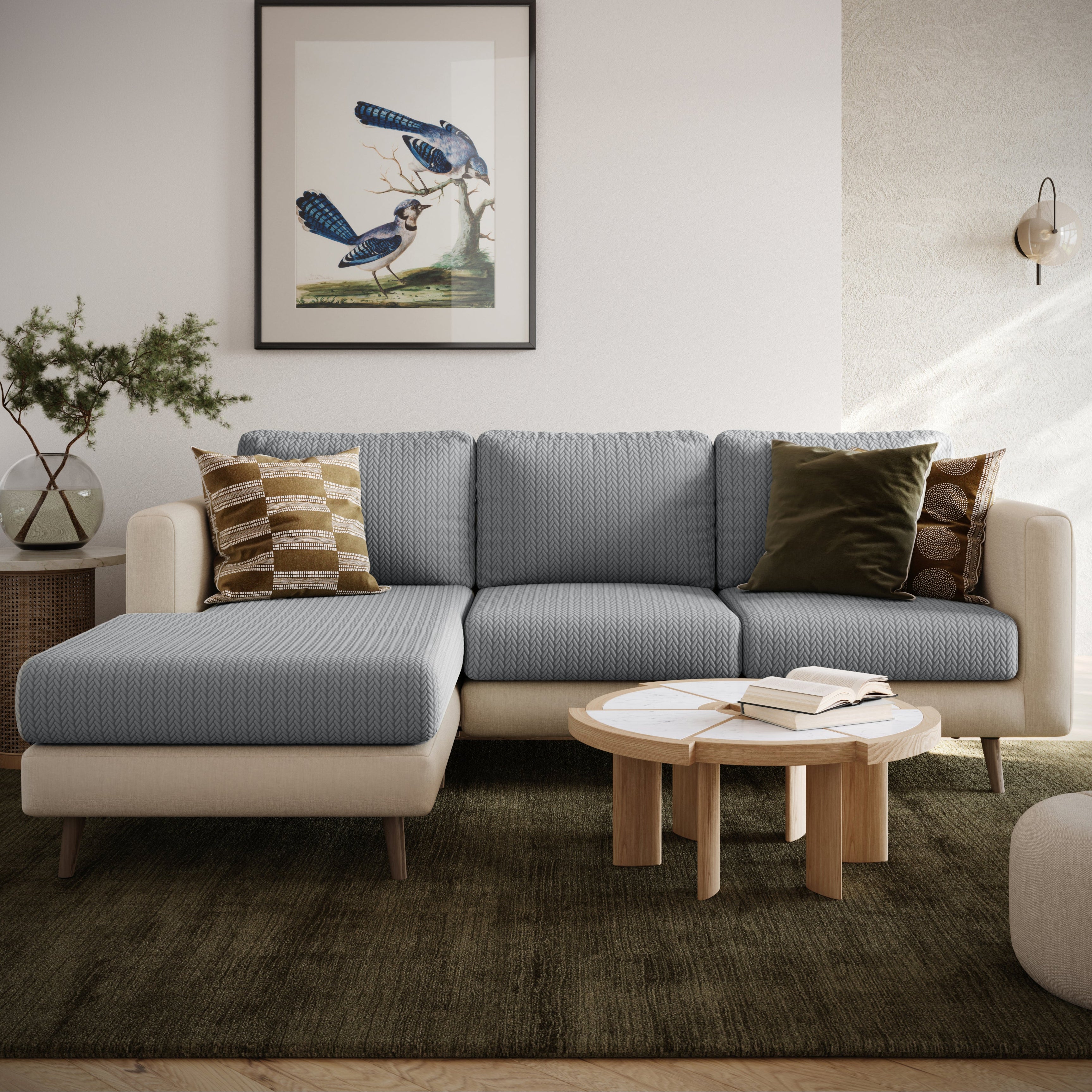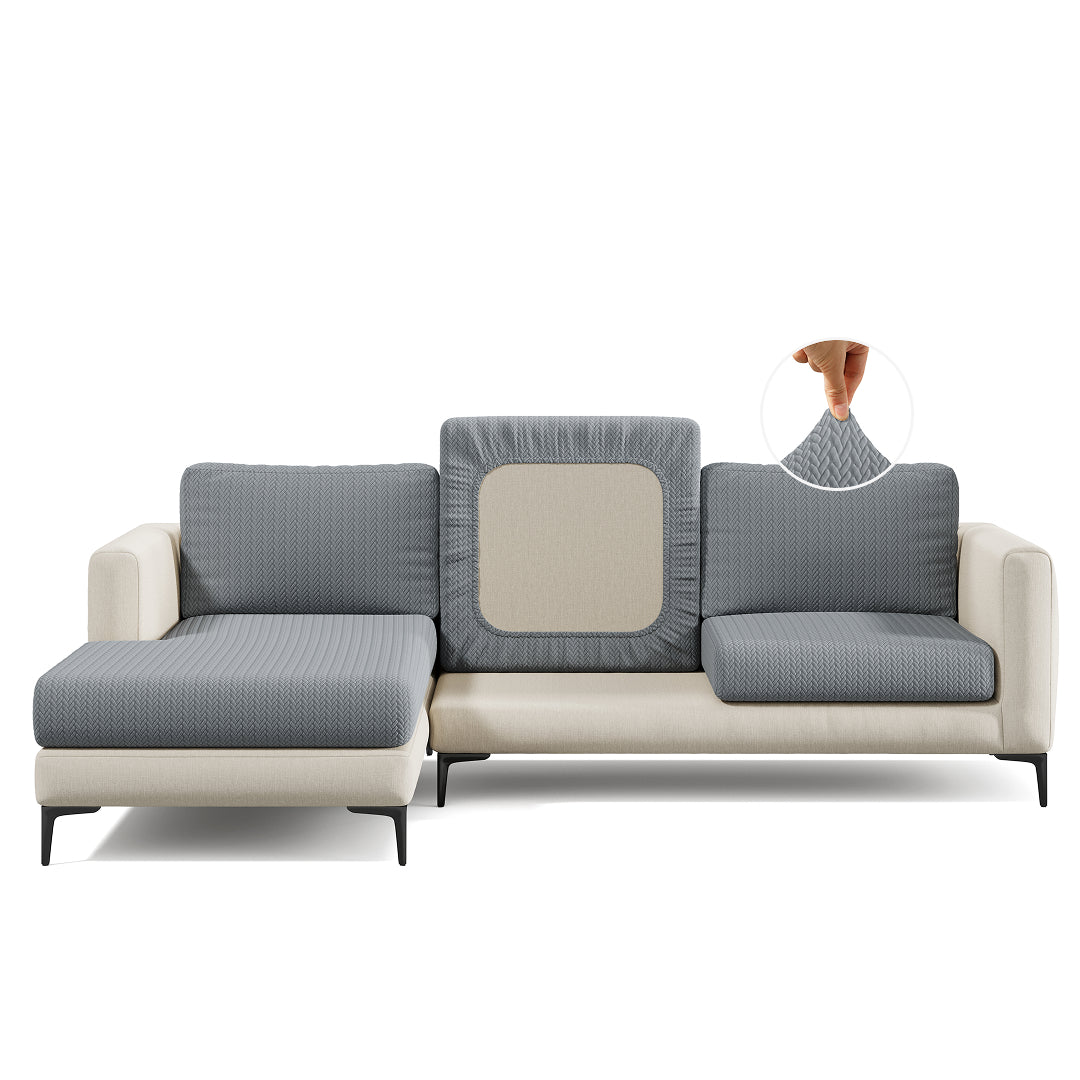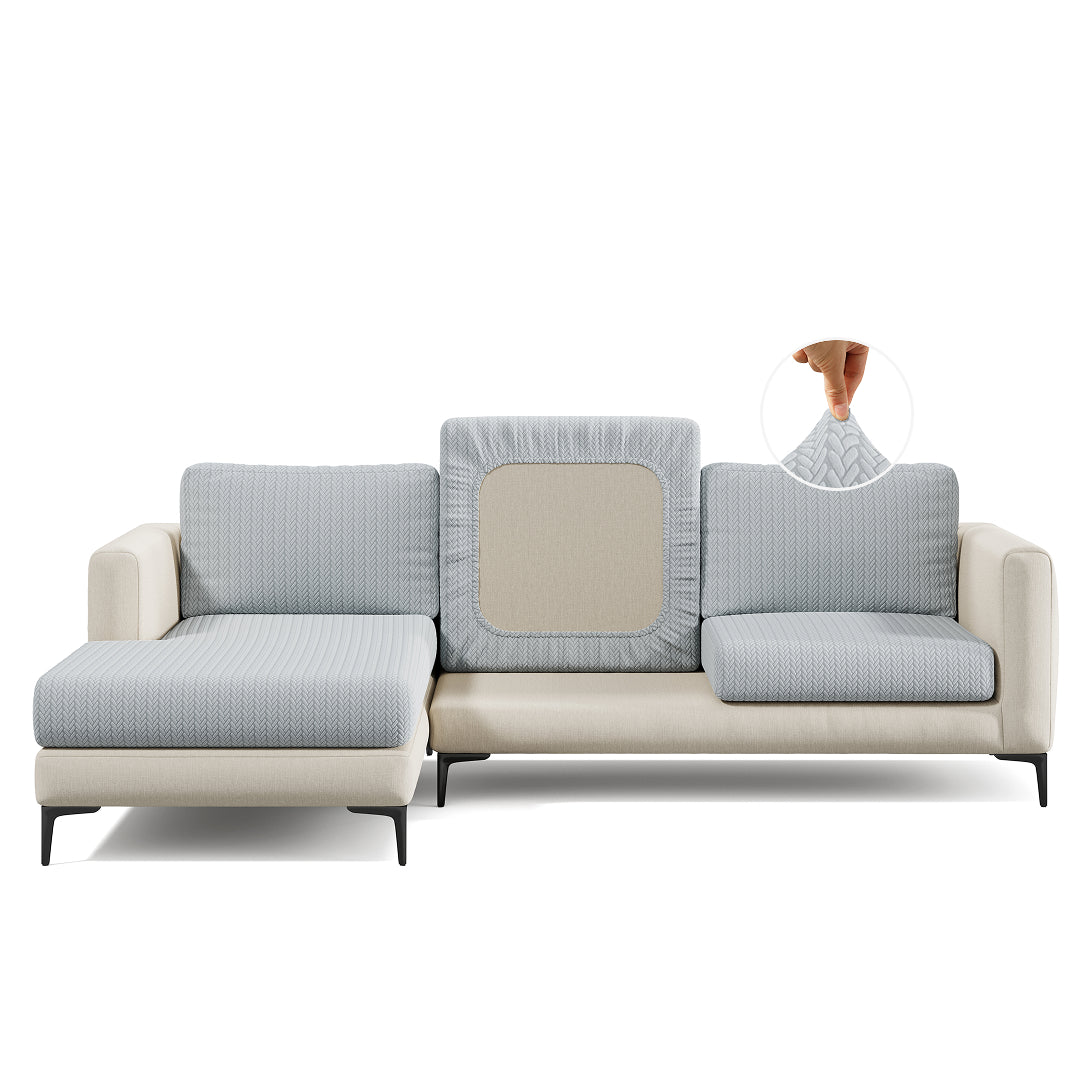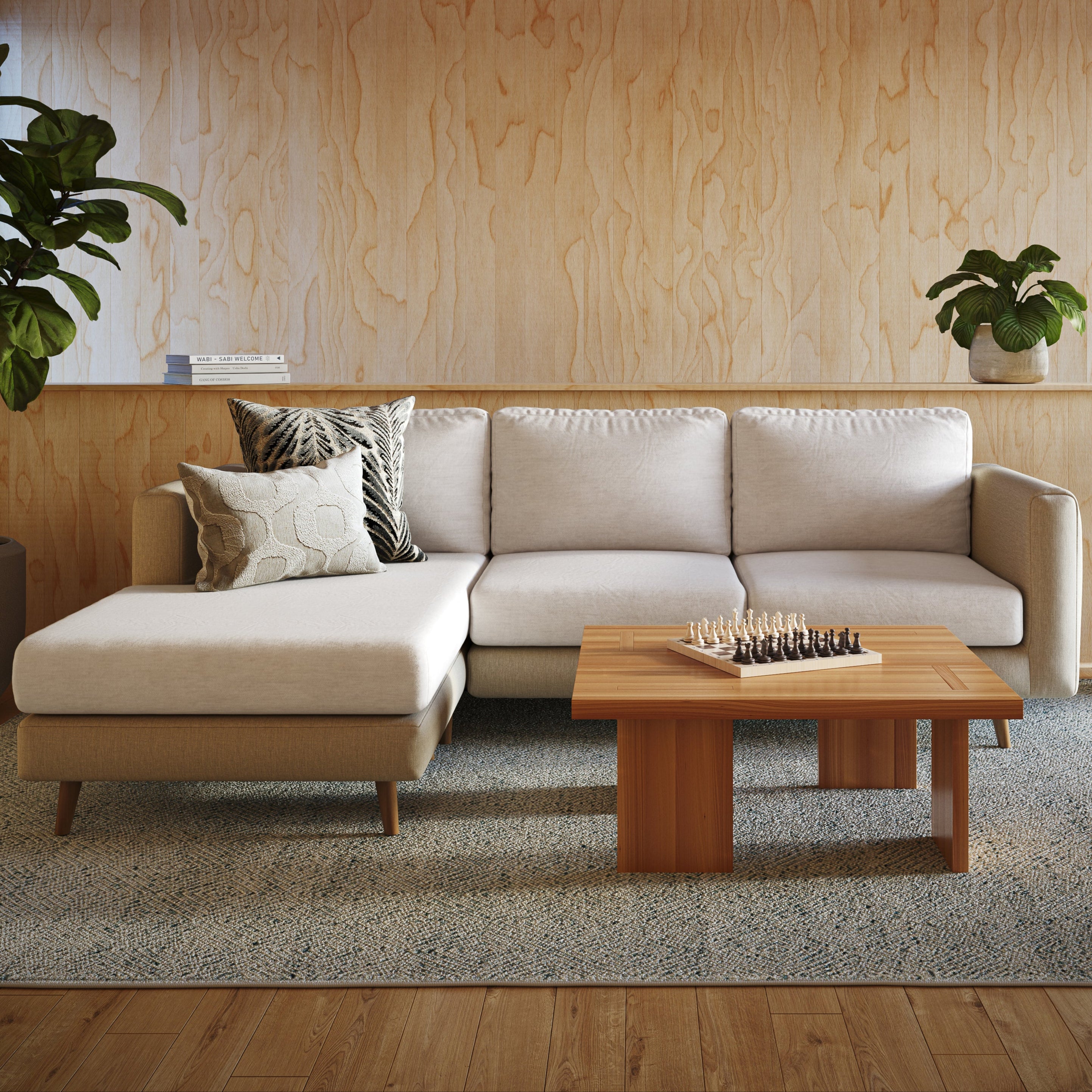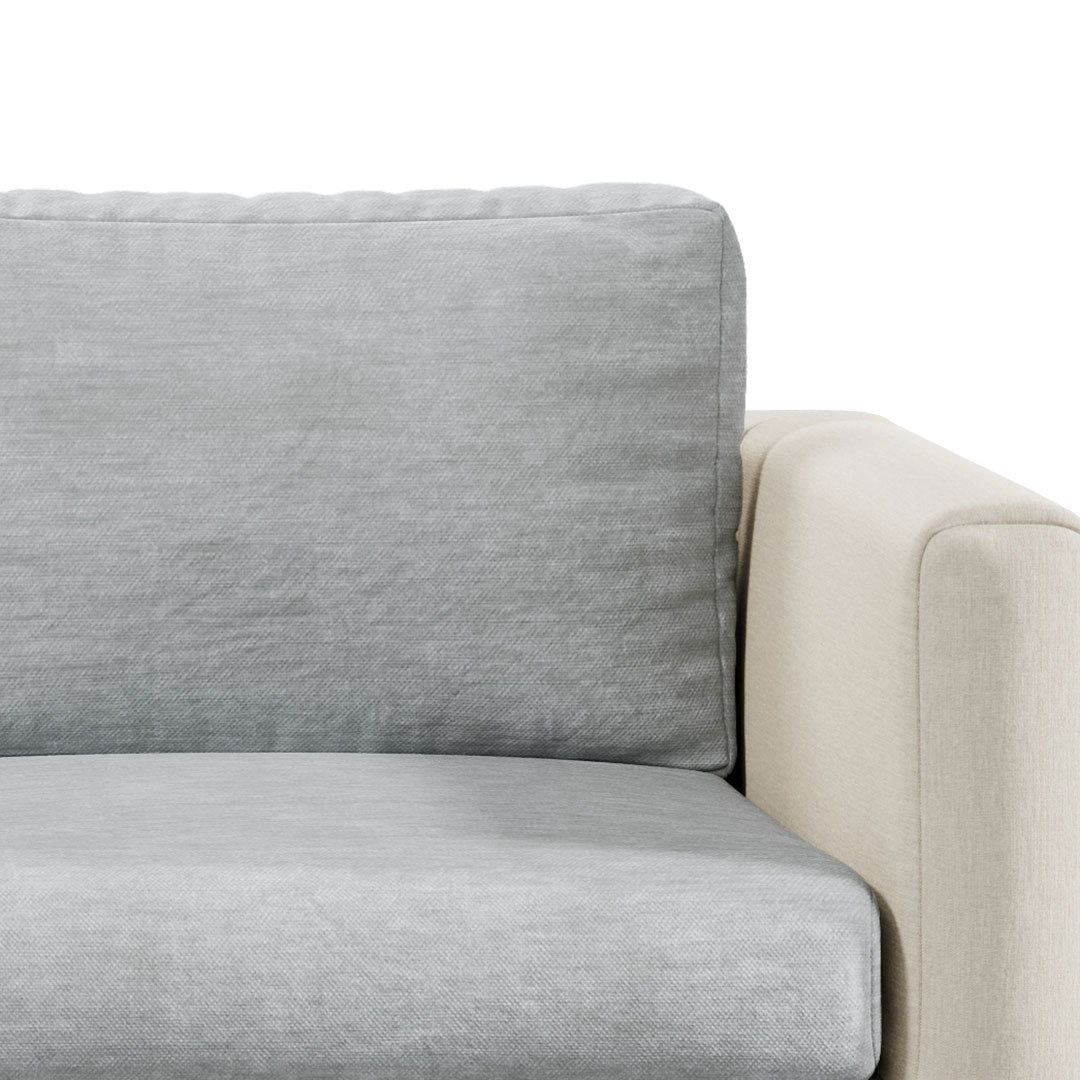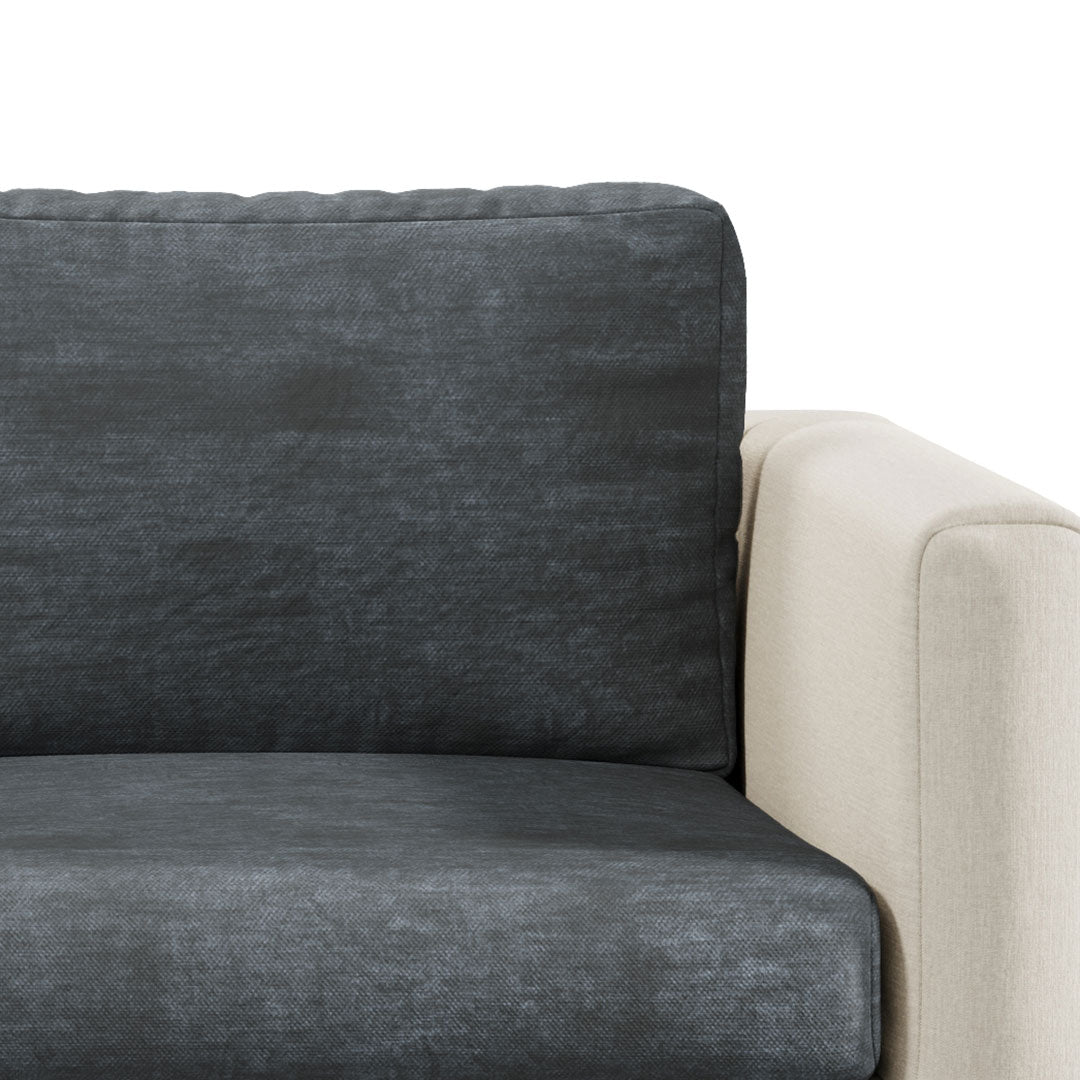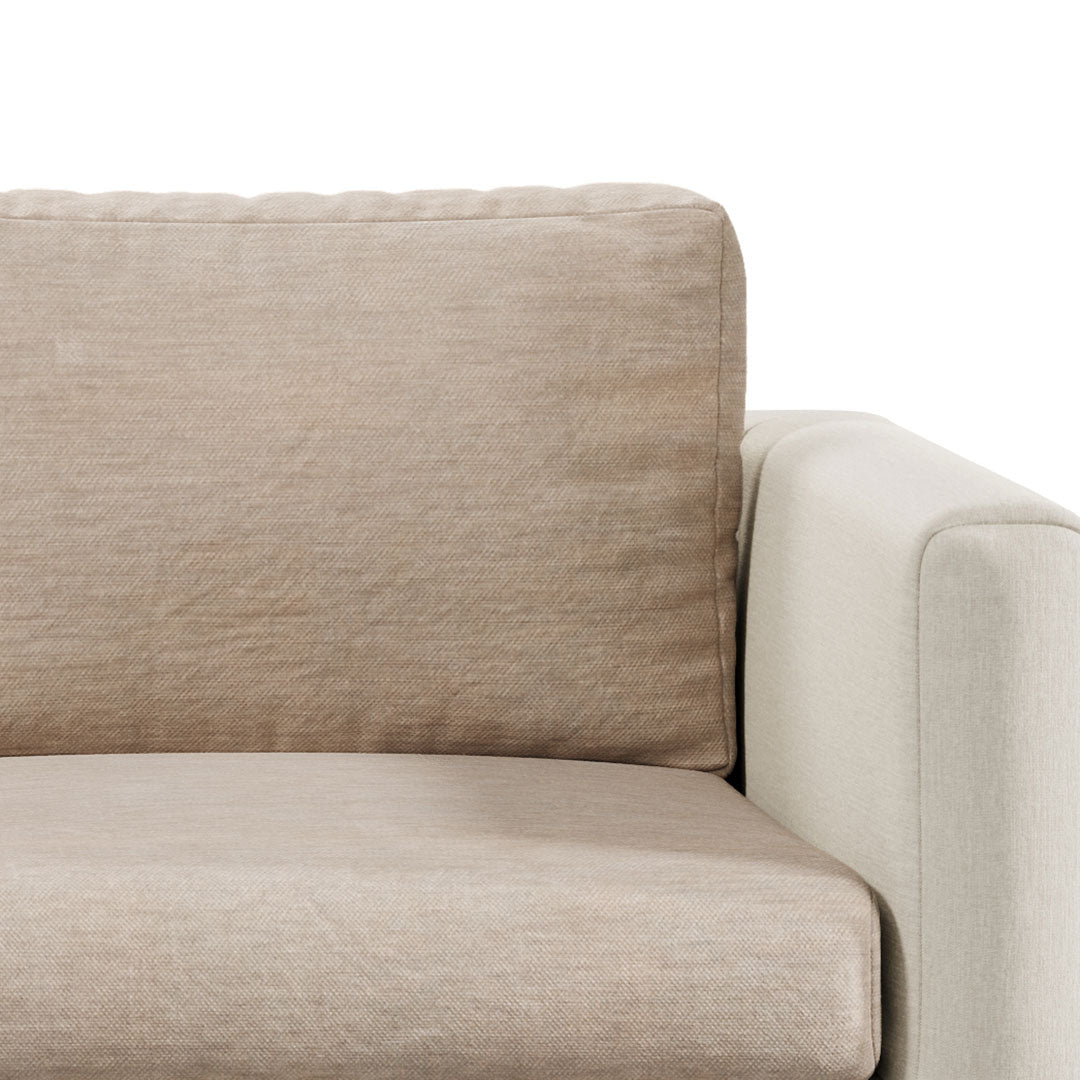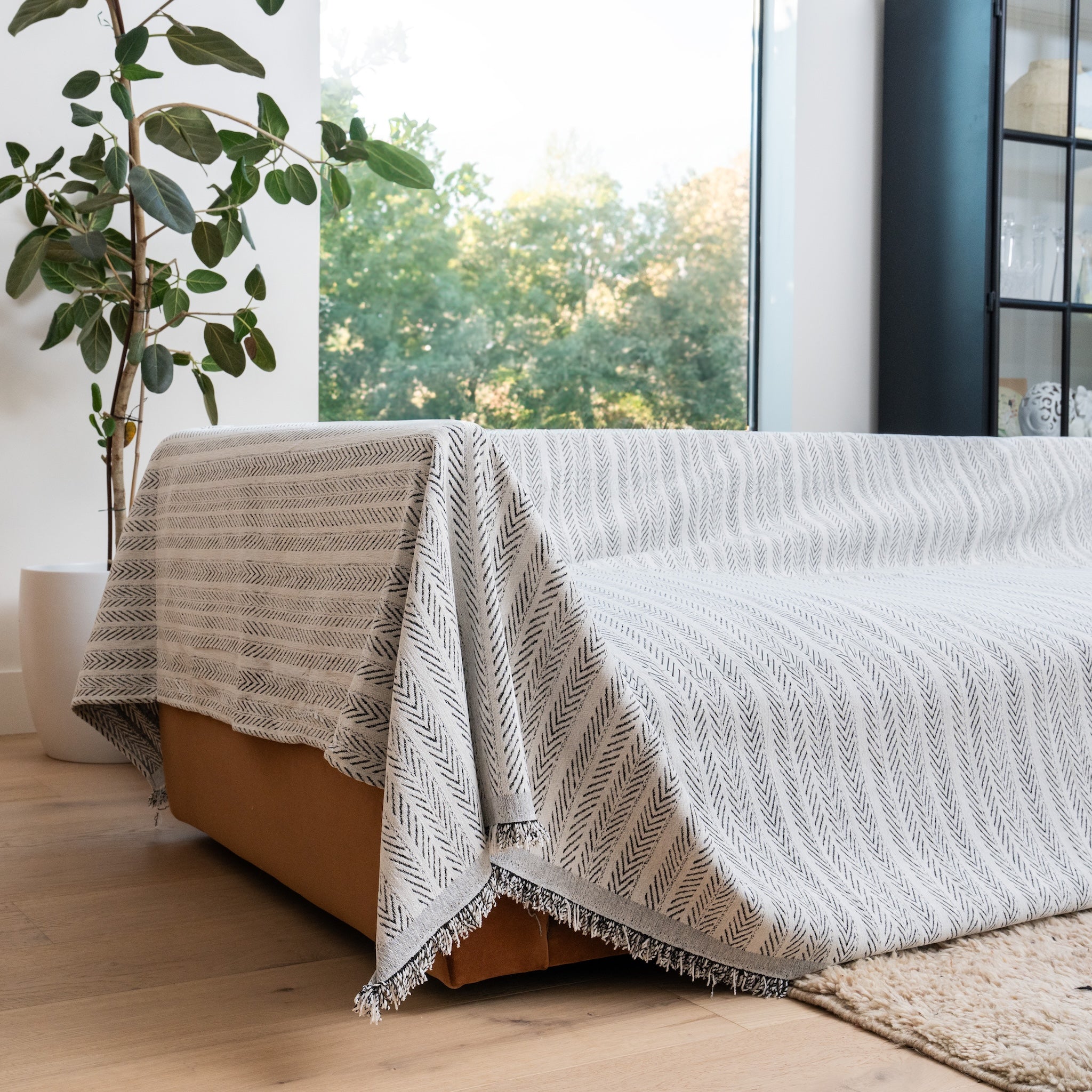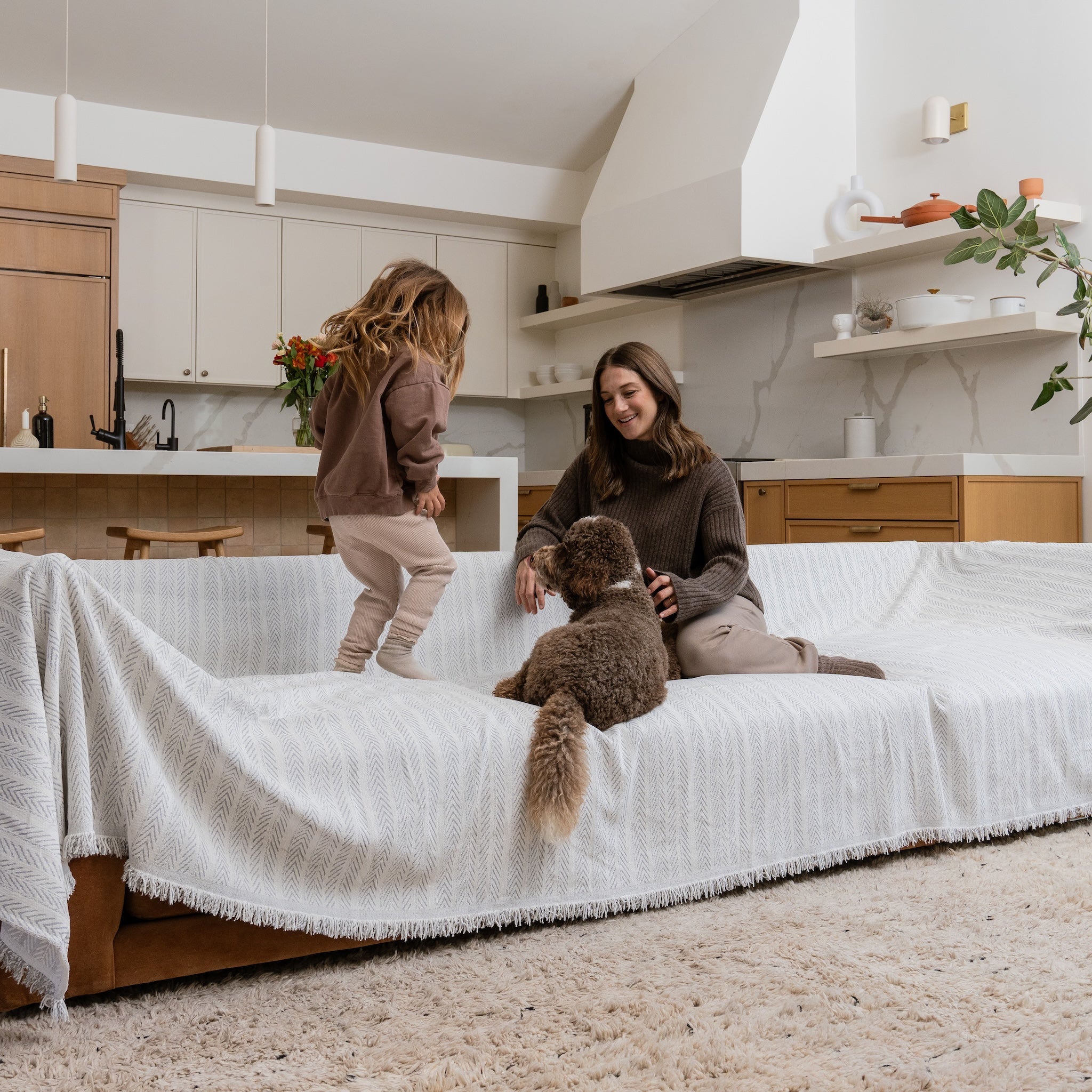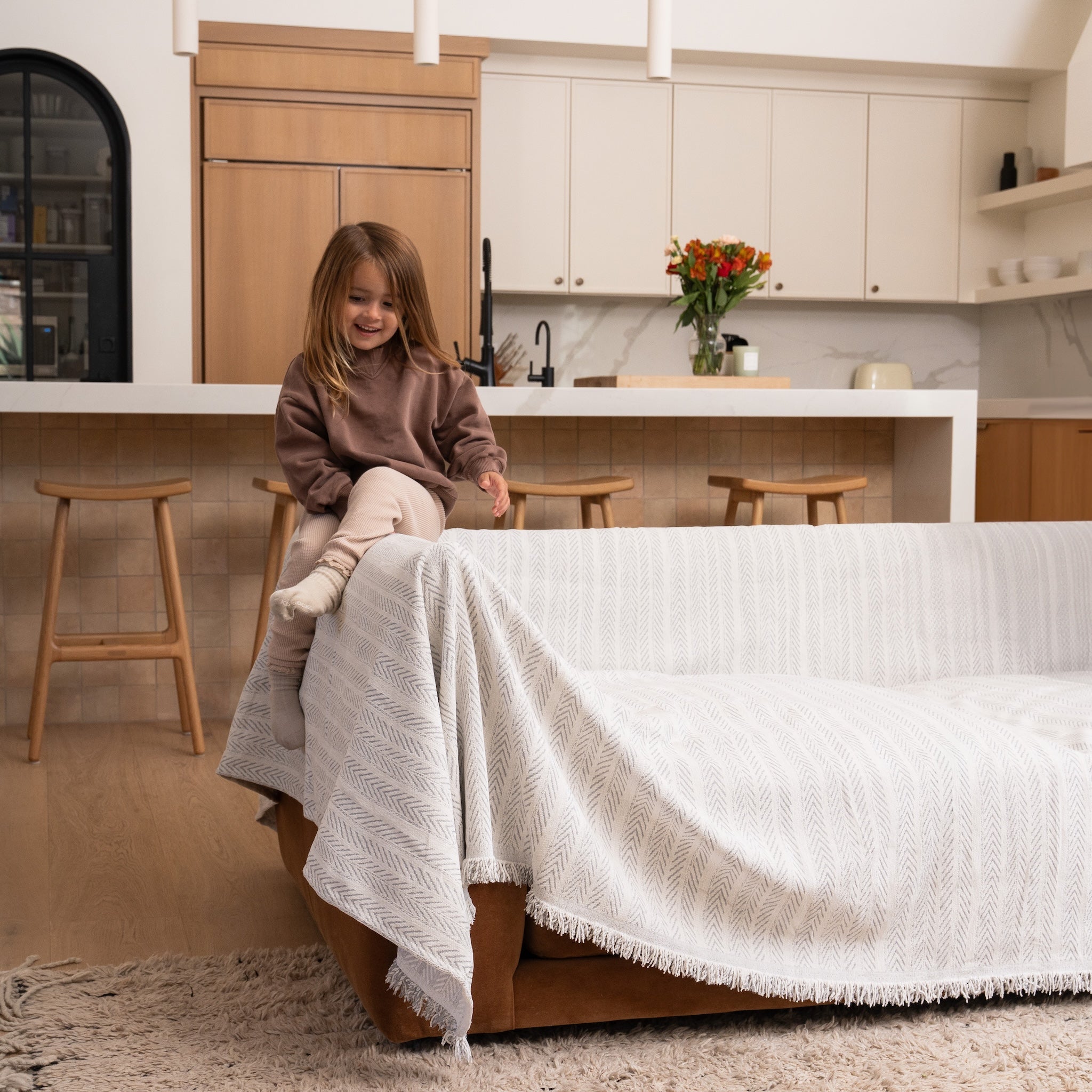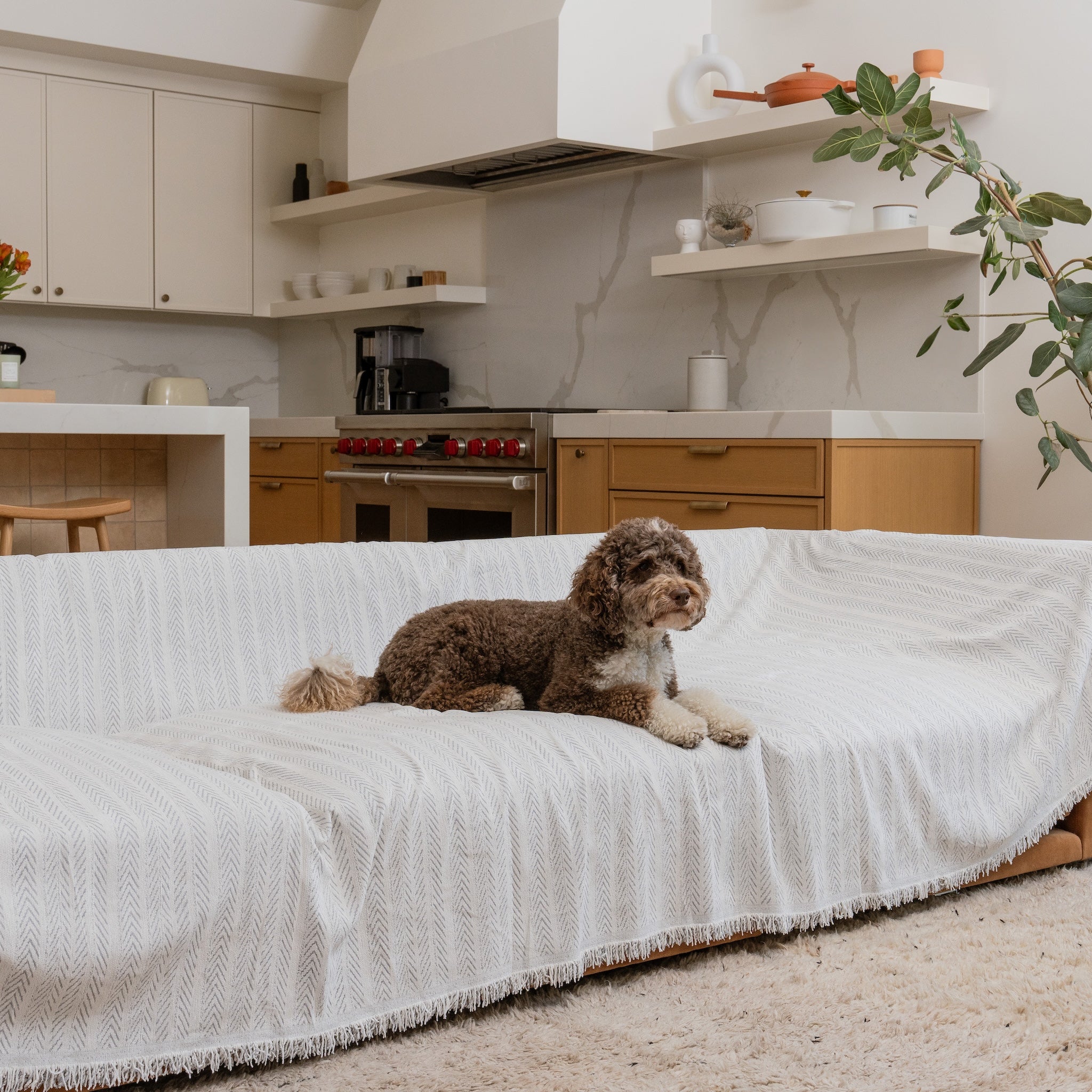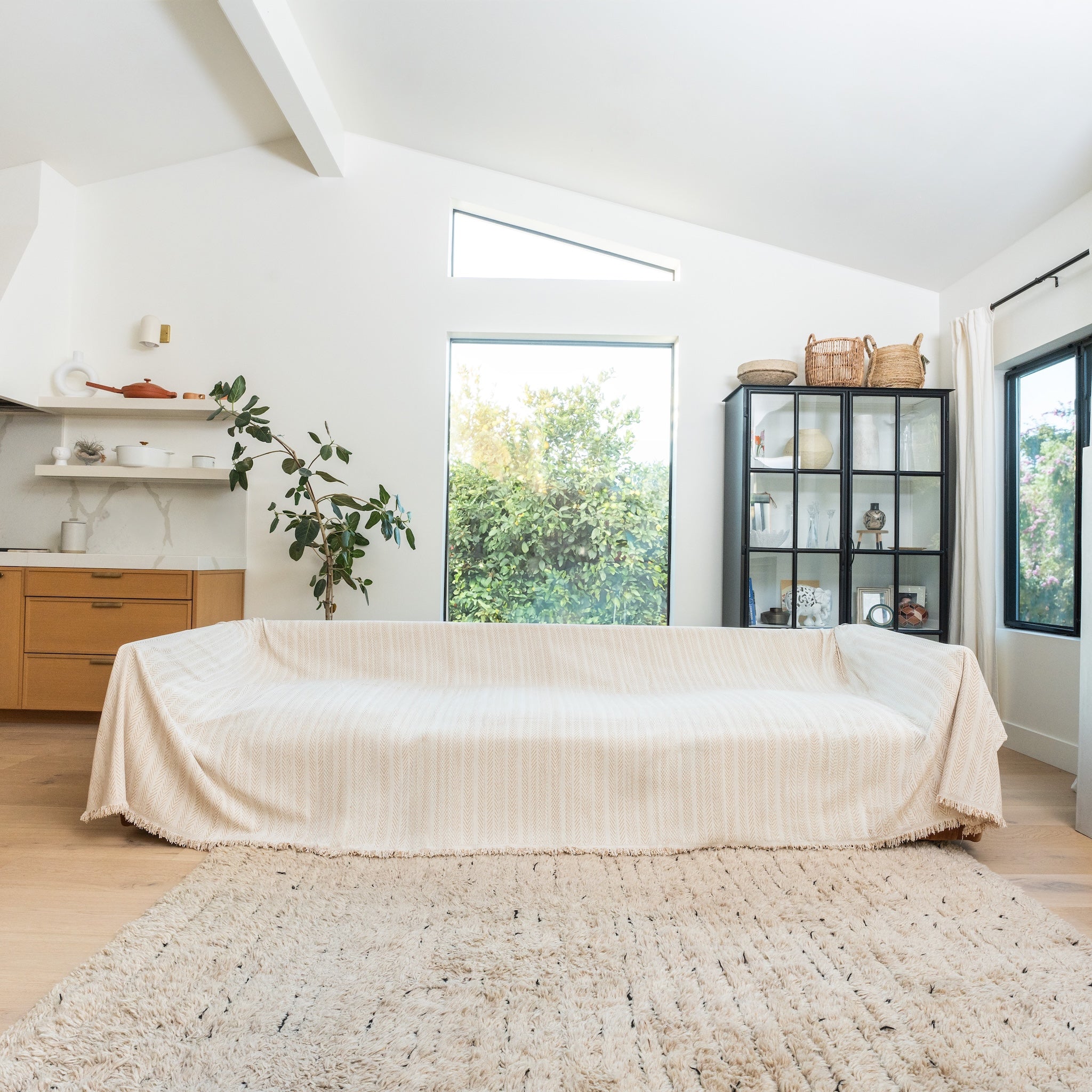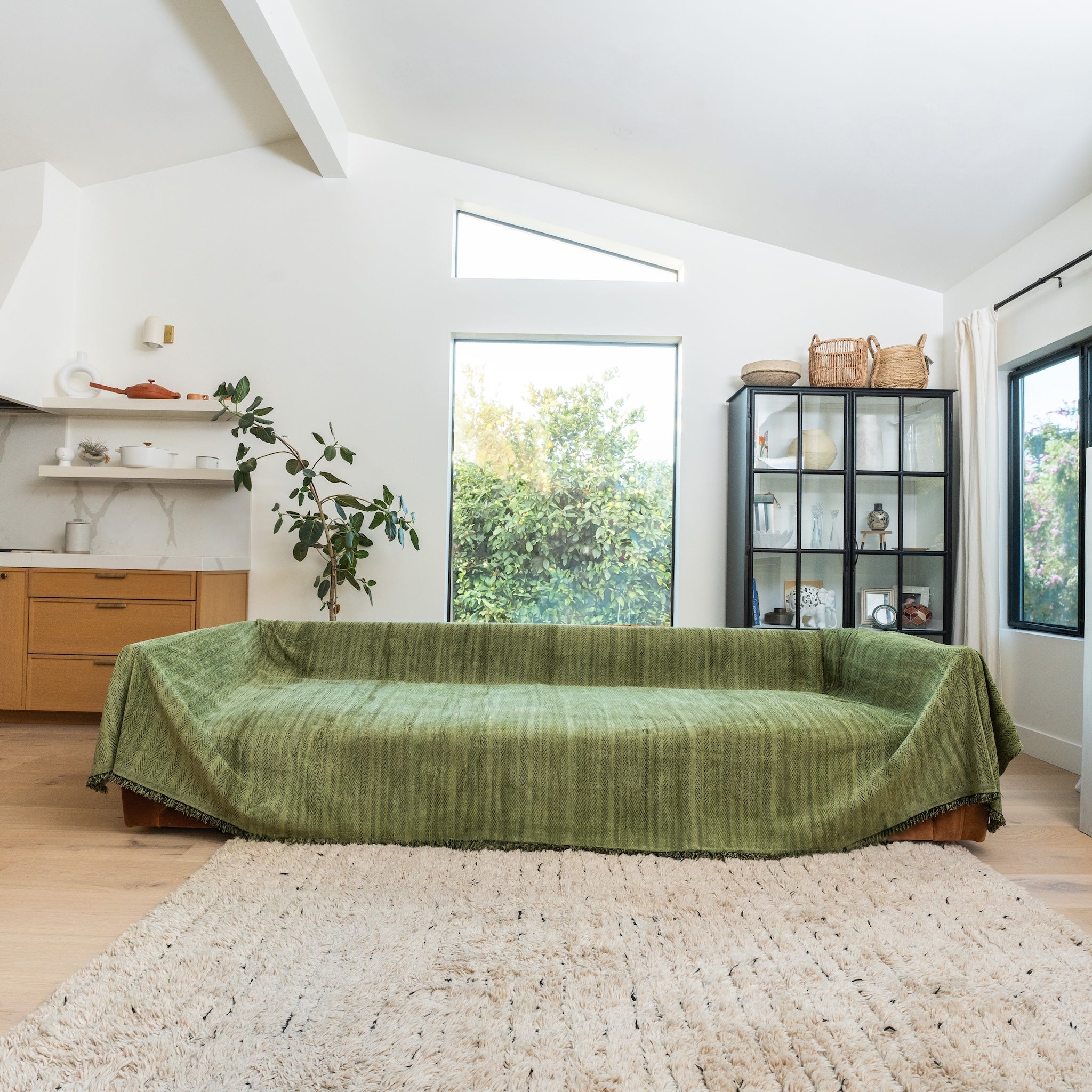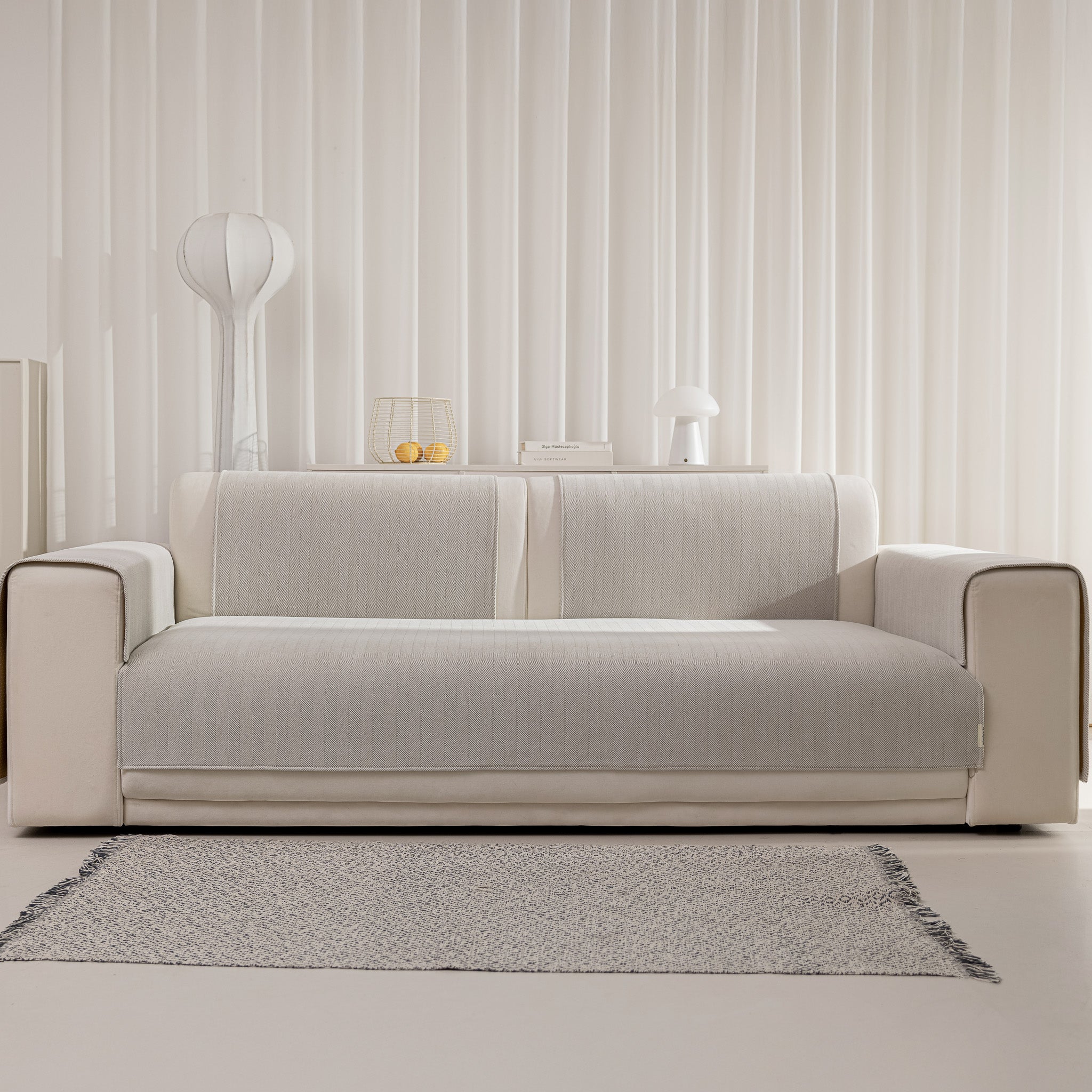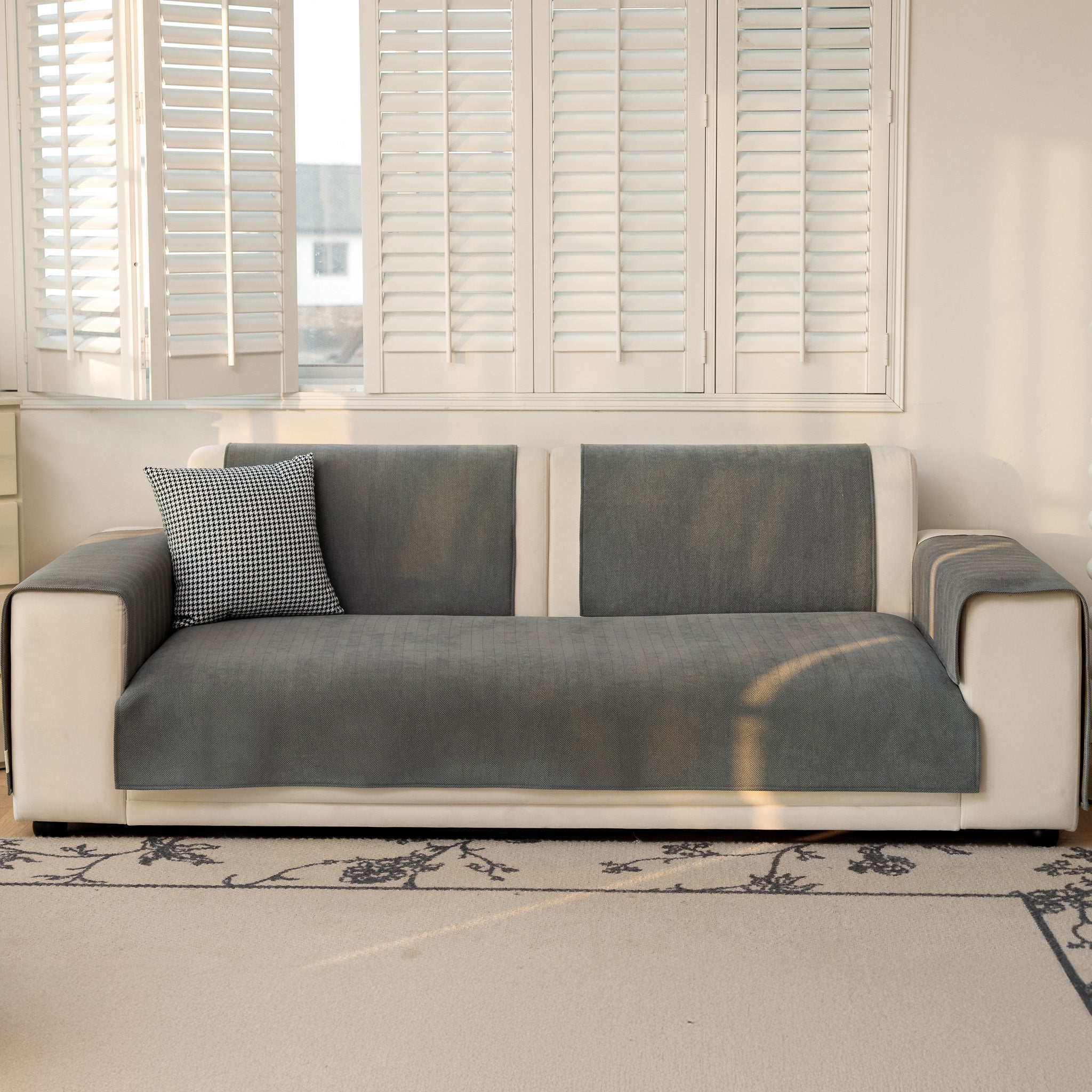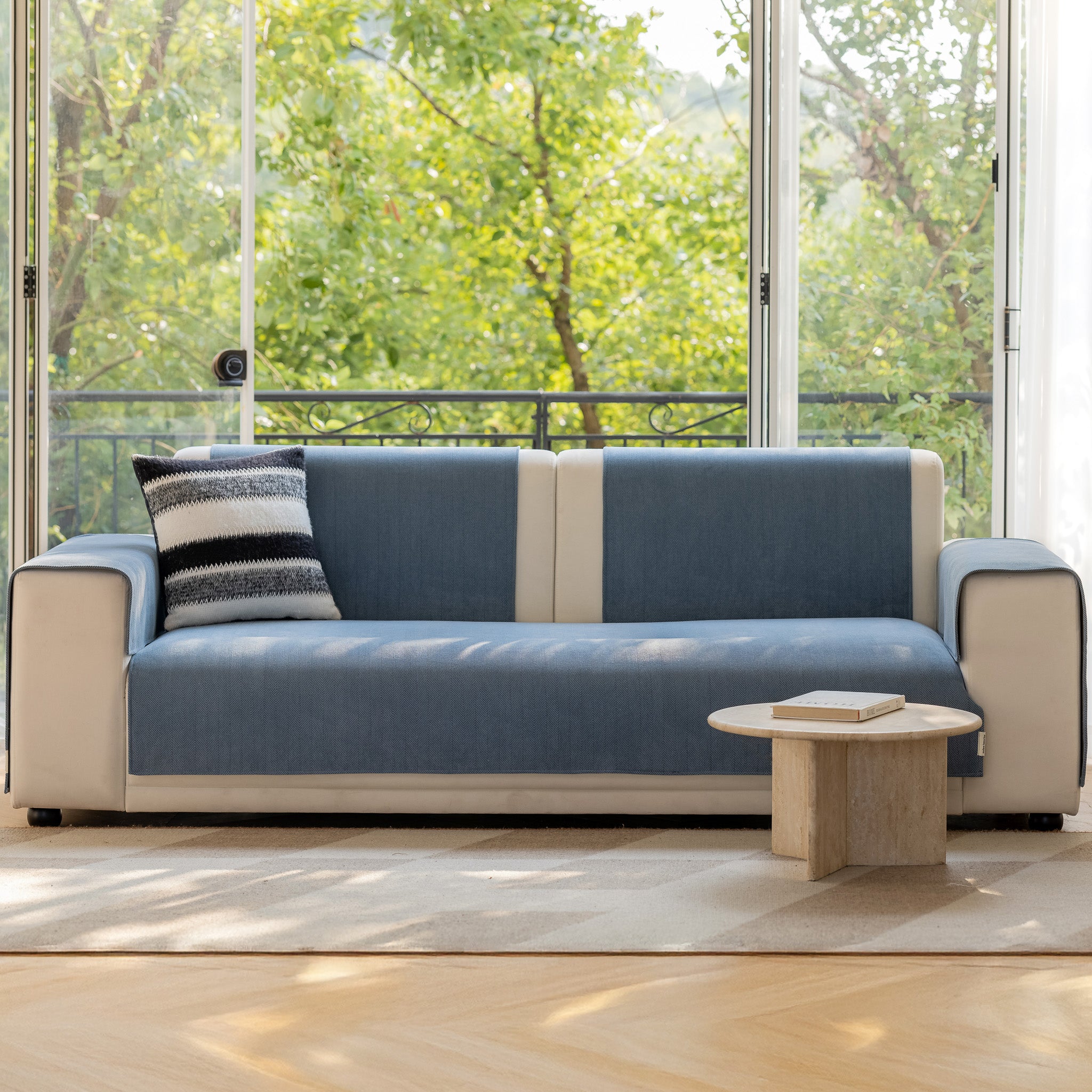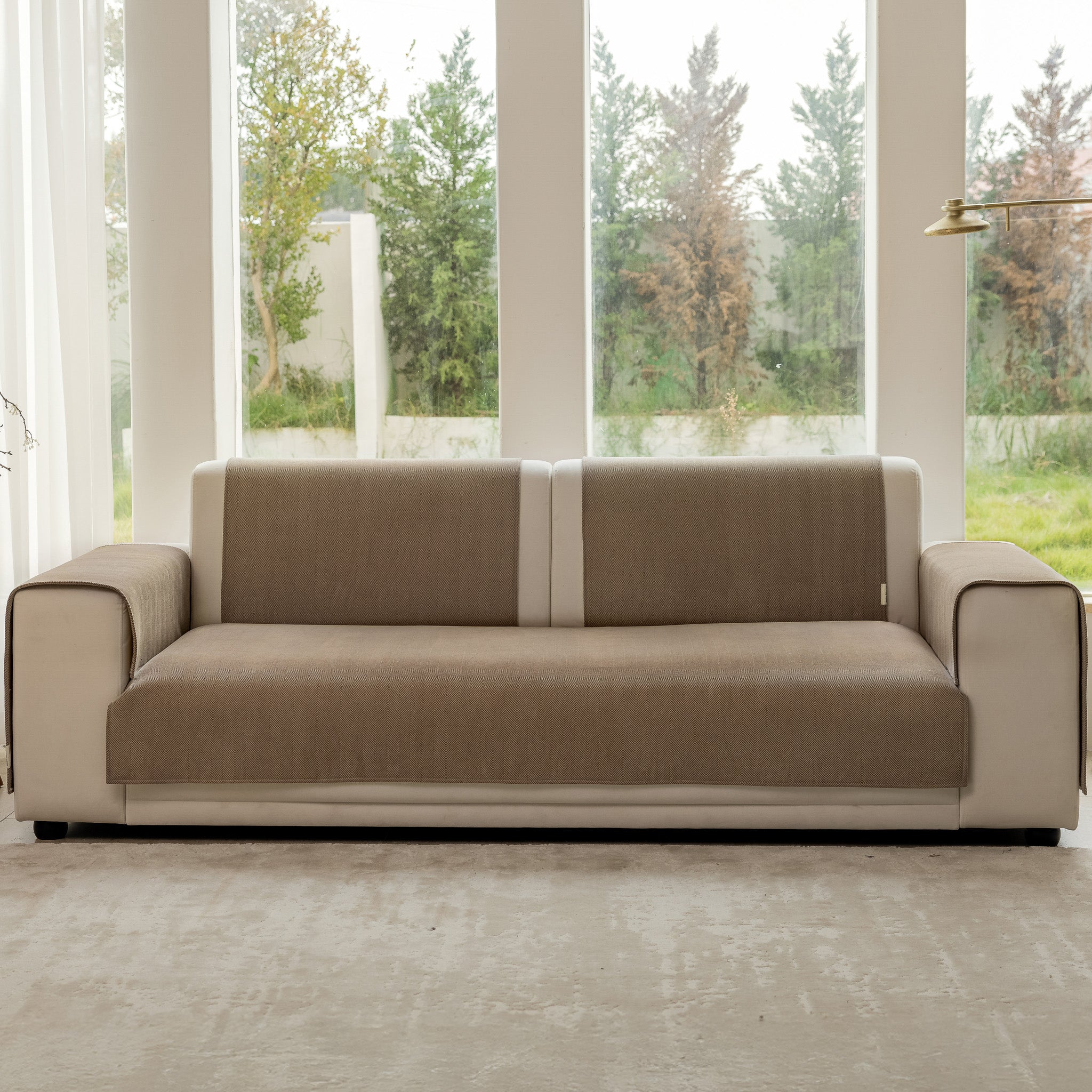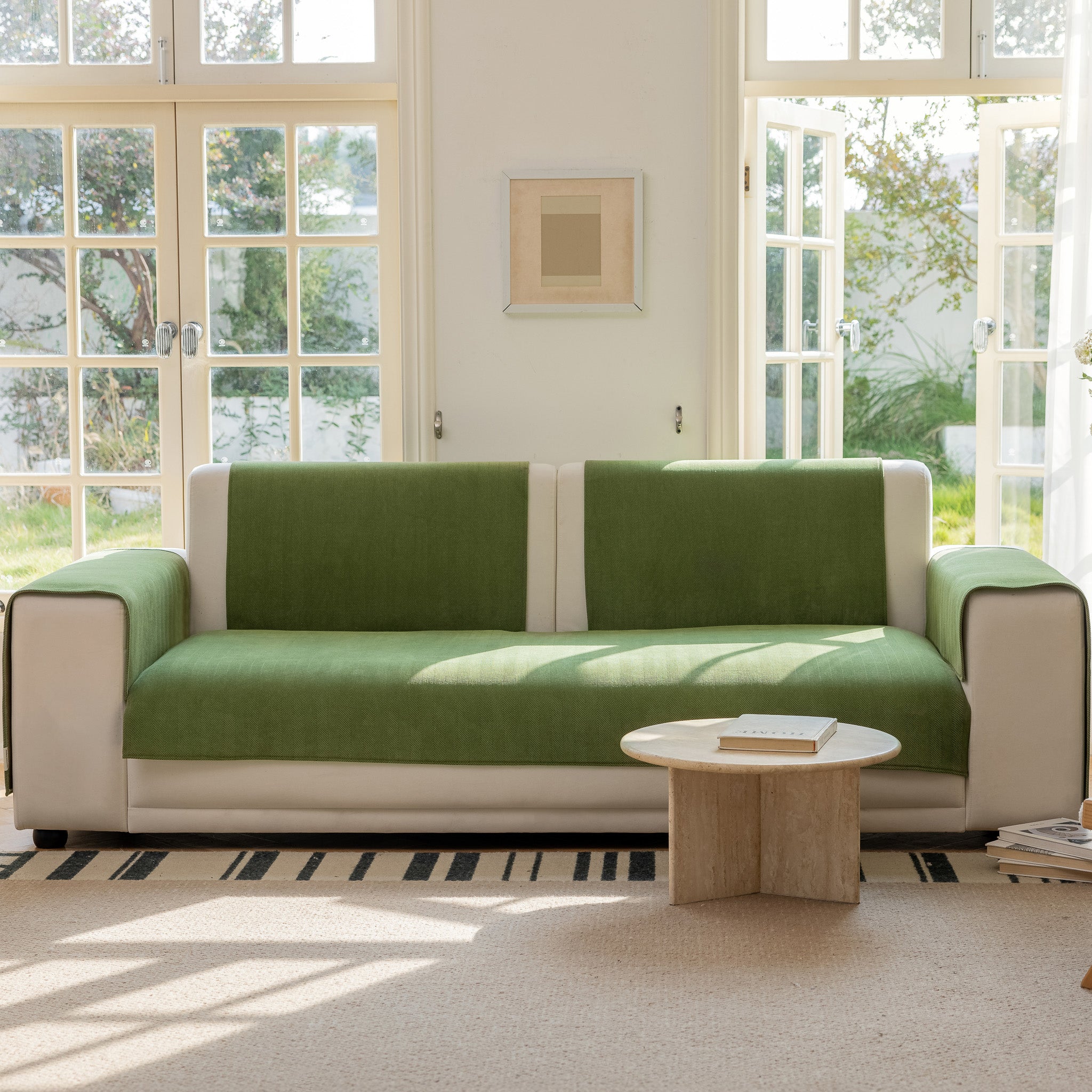The Quick Answer
- Consistent Commands: Use the "Off" command every time your dog tries to get on the furniture.
- Reward Good Behavior: Praise your dog and offer treats when they choose not to jump on furniture.
- Provide Alternatives: Set up comfortable dog beds near the furniture and encourage their use.
- Sofa Covers: Consider sofa covers for your furniture; they can protect your furniture during the training process.
- Clear Boundaries: Ensure your dog understands the rules by being consistent in your training and responses.
Why Do Dogs Love Furniture?

Dogs love comfort. Just as humans have favorite spots to unwind, dogs are also drawn to cozy corners. Furniture offers warmth, softness, and an elevated vantage point, making them a prime place to lay down.
There's more to it than just physical comfort. Your furniture is imbued with your unique scent. For dogs, scent is a primary means of communication and understanding their environment. When they jump up onto your couch, they're enveloped by your familiar and reassuring aroma. This provides them with a sense of security and belonging. Understanding why they like your furniture is the first step in training them effectively to respect boundaries within the home.
I have a lazy English bulldog who really enjoys her couch time. I assumed that she liked it specifically because of the comfort, but I’ve learned that it’s been just as much about our scent as it is the comfort. When we gave her a dog bed with an old t-shirt of ours, she was just as happy with that.

Importance of Consistency

Consistency is the cornerstone of effective dog training. Dogs thrive on routine and clear expectations. When rules change frequently or are enforced sporadically, it can lead to confusion and anxiety for your dog.
For example, if you allow your dog on the couch one day but scold them for it the next, they won't understand what you’re asking of them. It's important to decide on the household rules for your dog and stick to them. Every family member should be on the same page, using the same commands and offering the same rewards or corrections.
Now let’s get into the techniques you should be using to keep your dogs off your furniture.
Training Techniques

1. Teaching Commands
Effective communication is the most important aspect of dog training. The "Off" command serves as a clear directive for your dog to understand boundaries. To instill this command:
- Lead your dog towards the furniture.
- Just before they attempt to jump, firmly say "Off."
- If they obey, immediately reward them with praise or a treat.
- Consistency is key. Ensure every family member uses the same command to avoid confusion.
- Over repeated sessions, your dog will begin to associate the command with the action, making it a reflexive response.
Dr. Sarah Thompson, a renowned dog behaviorist, once mentioned in her book "Canine Conversations," the importance of using clear and concise commands. She said that dogs respond best to short, distinct commands that are consistently used.
2. Positive Reinforcement

Positive behaviors should always be encouraged. Dogs, like humans, respond well to affirmation:
- Always have a treat or toy handy. The immediacy of the reward reinforces the connection between good behavior and positive outcomes.
- Verbal praise, petting, or a short play session can also serve as effective rewards.
- Over time, gradually reduce treats, replacing them with verbal praise or affection. This ensures the behavior remains consistent even without constant treats.
3. Alternative Comfortable Spaces

Redirecting your dog's preference from furniture to their own space can be achieved with a bit of strategy:
- Invest in a high-quality dog bed that offers comfort comparable to your furniture.
- Place the bed in a strategic location, preferably where your dog can still see and interact with you.
- Enhance the bed's appeal by occasionally placing treats or toys in it.
- Infuse the bed with your scent. An old shirt or a blanket you've used can make the bed feel familiar and comforting.
- Over time, with consistent reinforcement, your dog will start gravitating towards their own space.
4. Using Tools and Barriers

Temporary measures can be beneficial during the initial stages of training:
- Dog couch covers work great to protect your furniture during the training process.
- Consider barriers like baby gates or playpens to restrict access to certain rooms or furniture.
- Some dog owners have found success with mats that give off a beeping noise when stepped on, deterring pets from climbing onto furniture.
- Always ensure that any tool or barrier used is safe and doesn't cause distress or harm to your dog.
The American Kennel Club recommends using safe barriers as a temporary measure during the initial stages of training. They emphasize the importance of always ensuring the dog's safety and comfort.
Addressing Common Concerns
Dogs Sneaking onto Furniture When Unsupervised

Dogs often seek comfort when alone. To counter this, ensure they have a cozy alternative like a dog bed. Using barriers or baby gates to restrict access to certain rooms can help with this during the initial training phase.
Mixed Signals from Different Environments
If your dog has been allowed on furniture elsewhere, like at a dog sitter's place, it can create confusion. Reinforce your home rules consistently and consider a brief re-training period if they've been exposed to different rules.
Dogs Testing Boundaries
Some dogs love to test limits. Stay consistent with commands and rewards. If they persistently try to get on the furniture, redirect them to their designated space and reward them for staying there.
Seeking Permission Repeatedly

If your dog keeps seeking permission to climb onto the furniture, it's essential to be firm. Use the "Off" command and guide them to their bed or designated space. Over time, they'll understand the consistent rule.
Using Negative Reinforcements like Shock Collars
It's always best to use positive reinforcement methods. Negative tools like shock collars can lead to fear, anxiety, and even aggression. Focus on rewards, consistent commands, and providing comfortable alternatives to furniture.
I've personally seen the negative impacts of shock collars. A neighbor's dog became extremely anxious and fearful after just one use. It's always best to approach training with patience, understanding, and positive reinforcement.
Conclusion
Training your dog to respect household boundaries, especially regarding furniture, is a journey that requires a blend of patience and strategy. As you navigate this process, keep in mind a few key takeaways:
- Every dog is unique, and their learning pace may vary.
- Use clear and consistent commands to guide your dog's behavior.
- Celebrate good behavior with rewards, reinforcing desired actions.
- Maintain uniform rules and ensure all family members are on the same page.
- Training is an opportunity to strengthen the bond between you and your pet. Celebrate the small victories and enjoy the journey.
By following these tips, you'll be able to better train your dog and strengthen your bond.
